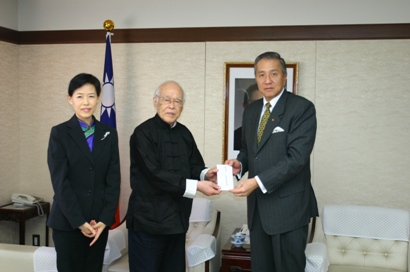 Hidemine Jibiki makes a donation to Taiwan disaster relief
Hidemine Jibiki makes a donation to Taiwan disaster relief
for the Typhoon of August 2009
Hidemine Jibiki (地曳秀峰) trained in Shotokan Karate, Hakko-ryu Jujutsu, Daito-ryu Aiki Budo, Taiji Quan, Xing Yi Quan, and Ba Gua Zhang. He is President of the of the Japan Chapter of the International Cheng-ming Kung-fu Association (AJSMAF), and of the Japan branch of the International Chinese Kuoshu Federation. He is a Fourth-generation student of Baguazhang founder, Dong Haichuan.
This is the fourth part of an excerpt from an interview in Japanese with Hidemine Jibiki. You may want to read Part 1 | Part 2 | Part 3, in which he discusses his experiences in Daito-ryu with Tsunejiro Hosono Sensei and Kotaro Yoshida Sensei, his experiences with Hakko-ryu Jujutsu Founder Ryuho Okuyama, and meeting the famous Chinese martial artist Wang Shujin before reading this section.
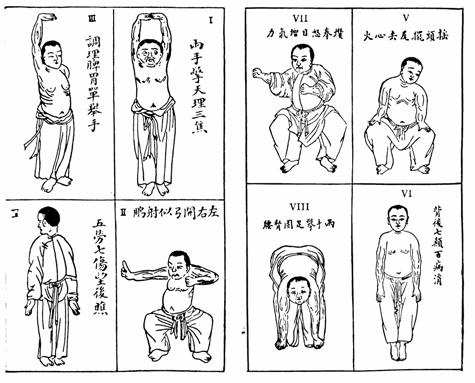 The Baduanjin Qigong (“Kikou” in Japanese)
The Baduanjin Qigong (“Kikou” in Japanese)
Often practiced by Aikido’s Nobuyoshi Tamura
Aiki Budo and Kikou
Q: Was part of your motivation for learning Taiji Quan and Jo to deepen your knowledge of Yawara?
A: Yes, that was part of it. That was still the period of my training in the fundamentals of Taiji Quan, and since I hadn’t yet gotten to the point of trying out techniques my attention was still focused on Yawara. Since my primary interest was Yawara, no matter who I got a hold of I only talked about Yawara. If I were to put myself in the place of the other person I suppose that I would have been annoyed, but I wanted to talk about it, and talk about it… (laughing)
Q: Aiki is also a Budo of “Ki”, was Taisei Kikou useful in the development of Ki?
A: I wasn’t aware of it, but I think that it was. Aiki is a Budo in which we apply techniques on each other and train through collision, but Chanron is different. Conversely, if I had not known Aiki I would not have been able to understand the value of Chanron, I might not have been able to continue.
Q: Were there other people in Japan doing “Kikou” at that time?
A: Not really. In common speech the word “Kikou” was unknown. I just groped my way forward feverishly. Until that point, whether it was Aiki or Jo, I had had Sempai and I could see the techniques, so it was easy to understand. If it was Jo, I could imitate my Sempai striking like this and responding like that, and work up a good sweat. If it was Yawara, I could imitate the instructor, and when I applied the techniques my partner would take ukemi and fall…and I would think “That was great!”. (laughing) It was easy to be satisfied. (laughing) However, whatever Yawara technique one applied to Wang Shujin Roshi he would escape easily. There was just a world of difference in our abilities. I wasn’t even equal to partnering with him. Every time that I thought “I have him!” he’d burst full with Ki and I would fly away.
Q: Was it that Roshi was already releasing his Ki before you came together?
A: That’s probably true…certainly there was difference in levels. When one reaches the zone that Roshi was in, one’s entire body is surrounded by a thick barrier of Ki like the halo around a statue of the Buddha. When that happens the very constitution of one’s body changes, and nothing happens even when a technique is applied to you.
Self Defense Techniques for Women
Q: You regularly say that the techniques of this Budo can be used by women, and are useful for self defense…?
A: Budo is know-how for protecting one’s body. Whether you have a little know-how or not will determine whether you can escape from danger or not. For example, from my point of view it would be unthinkable to die from being choked with both hands from the front. The person who is being choked has both hands free, so if they just strike a vital point that they will be able to escape. Whether you have that knowledge or not will make a great difference in the outcome.
If self defense were taught to female students in the schools as part of the curriculum I believe that a great many dangers could be avoided. It doesn’t have to be something as formal as Judo or Aikido, just what is usually referred to as self defense training is enough.
For example, just knowing some methods of responding when one is grabbed from the front, when one is struck from the front, or when one is choked makes a difference.
If one knows what to do in order to avoid those things most opponents will become frightened. It is because one does not know that they become frightened and unable to move.
Q: I see – aren’t self defense techniques difficult?
A: Not really, if one has the knowledge then they will be able to take action. I think that it would be beneficial to teach it in physical education classes as part of basic knowledge for women. In the past, women in Samurai families would be taught self defense techniques as part of their basic education. That was true until the end of the war, and then it gradually became outmoded, until today it has disappeared completely.
Q: But aren’t self defense techniques difficult?
A: In terms of Budo as know-how, there are books and videos being sold with a variety of know-how, it is the same as that. I believe that it is beneficial to learn how to avoid danger in the same way.
It could be said that women and smaller people are more vulnerable to assault, and through this type of education one becomes capable of escape. Standing in a place where one will not receive an attack when walking down the street or when encountering another person, one can handle difficult situations calmly. I think that the problem can be handled before the stage at which one thinks about how to apply a technique. Self defense is not a game, one’s life depends upon it. Just knowing two or three tricks perfectly will make a big difference. Budo is especially necessary for weaker people.
Budo Fulfills Many Goals
A: I think that one of the most wonderful things about Budo’s Taiji Quan are the health benefits. Budo is something that provides self defense and health without relevance to gender, age or build. Further, since it soothes strained nerves it is also a method for relieving stress for the businessman.
Q: Did you use this as a method of relieving stress during your time as a translator?
A: Yes, I did. (laughing) Working as a translator on the American military base was interesting, but it was extremely stressful. In the morning I’d concentrate on work for two or three hours and my blood pressure would rise as I worked. I’d struggle until it started to hurt – I wouldn’t be able to work in the afternoon. I’d practice Taiji Quan in the evenings, and my blood pressure would drop along with the practice. (laughing).
When one relies on alcohol to relieve the pressures of work they end up destroying their health. Budo is of a higher dimension, it’s not just the pleasure of practice, one can also discover something that offers mental and spiritual sustenance.
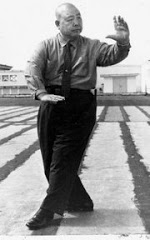 Wang Shujin walks the Bagua Circle
Wang Shujin walks the Bagua Circle
Encountering Taiji Quan, 40 Years Ago
Roshi’s Reception in Japan.
Q: Forty years ago how was Roshi’s coming to Japan received by the average person?
A: Roshi was invited by the All Japan Jodo Federation (全日本杖道連盟). The father of the chairman, Izumi Toyama (頭山泉), had a great influence in politics and finance before the war, he was a very important person. That time, fifteen years after the end of the war, was the time of the post-war recovery, but even at that time I think that his father’s name, Mitsuru Toyama (頭山満), still possessed some influence. That his son had invited Roshi as a cultural emissary from China caused a stir in the mass media of the time.
 Morihei Ueshiba’s teacher Onisaburo Deguchi (left)
Morihei Ueshiba’s teacher Onisaburo Deguchi (left)
Mitsuru Toyama, right-wing political leader
and founder of the Genyosha nationalist secret society (center)
Ryohei Uchida, ultranationalist political theorist
and founder of the Black Dragon Society (right)
Toyama was also closely associated with post-war Yakuza boss Yoshio Kodama
Q: Was Budo still popular at the time?
A: Some of the pre-war atmosphere of popularity still remained at the time. But on the other hand, it was also a difficult time in which to practice Budo. By the orders of GHQ (the General Headquarters of Mac Arthur’s occupying forces), it was no longer possible to teach Budo in the schools, and many neighborhood dojo were also closed. I did Karate both before and after the war (Shotokan-ryu Karate / 松濤館流空手, taught by Gichin Funakoshi / 船越義珍), and we didn’t have a dojo to practice in so we rented the police station’s dojo. At that time Judo was popular and Karate was still rare – when we trained the police officers would come to watch us out of curiosity! (laughing) You could say that it was a time in which there was a great curiosity about Budo. Compared to that time it is quite different now…
Q: Did the newspaper article about Roshi coming to Japan generate a lot of interest?
A: There was a lot of resistance. Anyway, that the cultural emissary introducing Chinese culture to Japan was a “master of Chinese Bujutsu” was certainly a novelty. That’s because the introduction was through Budo rather than the usual mediums of ink brush paintings or pottery. That had a powerful impact. This was a time when there was an international image of Japanese people as having a deep familiarity with Budo, so I think that this was a result of the Chinese idea of the Japanese national character. Perhaps China had a strong desire to show Japan the high level of their nation’s Bujutsu. Further, the request had been submitted by Izumi Mitsuru, who had given much to the promotion of Kobudo, so it could be said that the desires of both sides may have gone hand in hand in making the coming to Japan of Wang Shujin Roshi, a true living national treasure of a Budoka, a reality. I could not imagine what kind of a Budo it was – but even so, when I saw the article saying “a master is coming” I thought that I wanted to meet them no matter what, in the enthusiasm of my youth. (laughing)
Note: There were no relations between Japan and the People’s Republic of China in 1960. At the time, when one said “China” it normally referred to Taiwan, the Republic of China, with whom national relations existed. Therefore, when speaking of cultural exchange between Japan and China this would normally refer to cultural exchange between Japan and the Republic of China.
Search for the Essence of Self Defense
Q: It is thought to be difficult to learn from those masters who surpass human understanding…
A: At the time I always thought that there must be better self defense techniques, and I was constantly searching deeper for them. Self defense techniques that did not involve weapons. It is easy to understand the advantage of holding a weapon, but I was searching for a Budo that would allow one to protect themselves with empty hands. That was the reason that I first chose to practice Karate. The speed of the striking and kicking and its rationality, I thought that it was superior to other Budo. I spoke of this before, but I had a friend from work who had a tendency to fight when he drank, and when he became violent I was unable to control him with Karate. Because he was a friend, I wasn’t able to use the strikes and kicks of Karate, you see. From that time my search for techniques that could control at such a time deepened, and I came to encounter Jujutsu. I tried to fight with Karate, but lost without being able to understand why, and I was astonished. (laughing) That was who I was when I started Jujutsu.
Jujutsu is a Budo that makes an essential point of relaxation, but I was still a novice in the world of Ki so I could not yet give up my allegiance to the physical power that is normally used in Karate, and I still had doubts as to whether or not it would be effective when Jujutsu was actually paired against someone like a boxer. I always had it in my mind that there must be something else, and it was at this time that I encountered the newspaper article. The words Chinese Bujutsu held an incredible mystique.
Nobody knows what “Taiji Quan” is.
Q: At the time Taiji Quan wasn’t very well known, was it?
A: That’s right. Now Taiji Quan is known around the world, but in the Japan of the time nobody knew what it was. First of all, it was called “Quan”. When one said “Quan” (“ken” / 拳) the only association that came to mind was the games played in tatami rooms at Japanese restaurants. A fox would come out and the hunter would shoot them…like that! (laughing) Something like “rock-paper-scissors”.
Q: I guess that there was no knowledge of Kenpo? But isn’t Karate also Kenpo?
A: Even Karate didn’t use the word “Quan”. The only expression used was “Te”. In other words, when saying things like “That person has good ‘moves’ (“Te”)”. In other words, a trick. As in “There’s a trick like this”. Karate was originally called “Karate” (“Chinese Hand” / 唐手), but in past times that “Kara” was a general name for all foreign countries, so “Karate” meant something like “Foreign Tricks”. It was only later that Gichin Funakoshi, who was my teacher, used similar sounding characters to create the name for a “weaponless fighting art” – “Karate” (空手). This was because Sensei was an educated person, formerly the principal of a junior high school in Okinawa.
Q: Was it because you had done Karate that you became interested in Wang Shujin Roshi’s Kenpo?
A: It was because I always thought there must be “better tricks”. This was a time when I hadn’t yet mastered Aiki Budo, so I still had my habits from Karate left. Can I counter that technique with the speed of Karate’s strikes and kicks, can I receive a boxer’s punches…it was always in my mind that there must be some “better tricks” somewhere. I thought there there must be some more effective and logical method for when one is attacked by a large, strong person. Even when I was attacked suddenly in Hosono Dojo, the techniques that emerged were still Karate. I would receive with Karate and then just at the end would I control them with locks and holds. (laughing)
Q: Budo is very interesting, isn’t it?
A: Hosono Dojo at that time was really interesting. Judo was also taught at Hosono Dojo, but I would come for training in Aiki. I was able to research if this or that technique would work when applied against a solidly built opponent. I would think of this trick, or that trick. But when I thought about it later I realized that it was the basics that were important and return to the beginning again. (laughing) Of course, when I heard some master saying “I used this trick” then I would start to think “there are also tricks like that”… (laughing)
Q: You were on fire for Budo.
A: Also, the people who gathered around me were all people interested in Budo. It was all people who thought “If I can do Budo, then I don’t need money”. We’d just hold down jobs on the side, it was as if we were just working because we had to in order to survive. (laughing) After an enthusiastic practice at the dojo we would go right out to drink and then the Budo discussions would begin. It was so much fun, we wouldn’t go home no matter what time it was… (laughing) My job was in Kisarazu, so I wouldn’t be able to make it back to Tokyo until the next weekend, and I wanted to linger over each moment. Every time that I returned to Kisarazu I couldn’t wait until I could go to Tokyo next. Each day, after I finished work at Kisarazu, I’d spend my time training hard by myself.
Published by: Christopher Li – Honolulu, HI

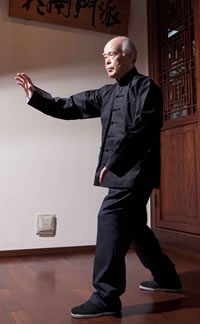
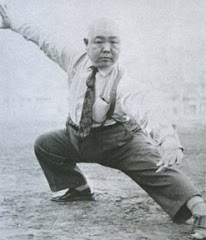
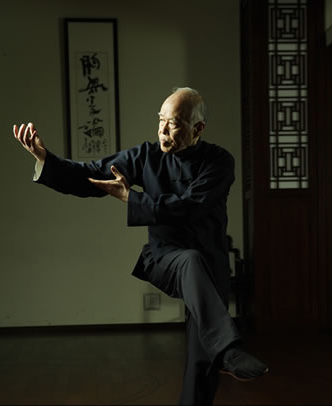
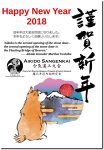
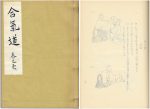
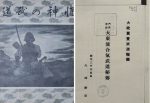

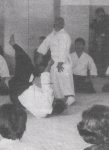
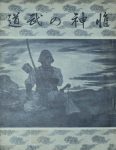
This is great, many thanks Chris for a wonderful blog!
Thanks Allan, glad you enjoyed it!
Best,
Chris
Chris, thanks for presenting this material. There’s a goldmine in here.
Thanks Dan, I think so too!
Best,
Chris
Thanks Chris,
Your articles and style are captivating !
I have difficulty to stop reading 🙂
Thanks a million !
Thanks Leo, glad that you’re enjoying them!
Best,
Chris